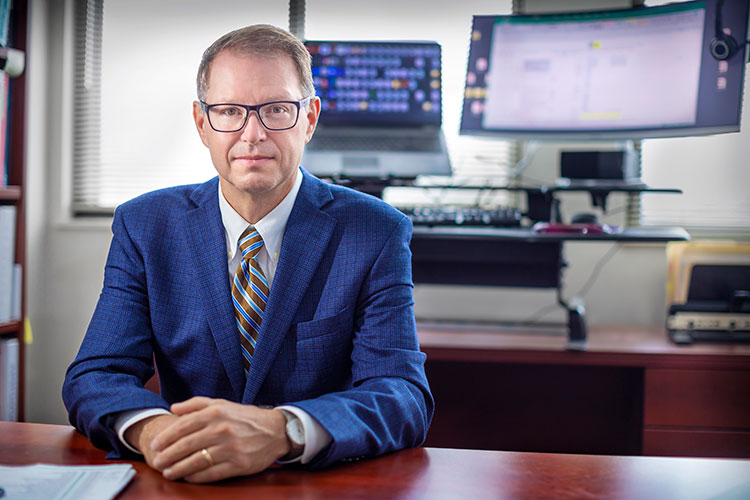Welcome

Dear Prospective Student:
Our programs provide training necessary for careers in medical physics and health physics. Medical physicists play a vital role in the delivery of health care in a variety of settings. Typically, medical physicists specialize in radiation therapy, diagnostic imaging, or nuclear medicine. Each of these fields is advancing and expanding to meet society’s growing health care needs. This is being fueled by the introduction of new breakthroughs in science and technology and also by the growth and aging of our population. In addition, there is increasing emphasis on improving safety and efficiency in virtually all aspects of health care. Well-trained medical physicists are highly qualified to contribute to meeting these societal needs. The work is exciting, challenging, and rewarding. However, becoming a qualified medical physicist takes careful planning and a decade or more of training, typically including an undergraduate degree in physics or engineering, an MS or PhD in medical physics, and residency training. This web site presents material of relevance to obtaining the MS degree in medical physics and health physics and the PhD degree in medical physics.
Selecting a medical physics graduate program can be challenging because of the number of accredited programs to choose from. Each of these programs shares a common goal of providing trainees with the knowledge and experience required to become a practicing medical physicist. However, each program is unique because of variations in the research interests of the faculty, the mission of the host institution, and many other factors. In selecting a program, prospective students should consider how well the program matches with their immediate educational needs, subject matter interests, and long-term career plans.
Perhaps the strongest reason to consider our program is its high quality. This quality is possible because our program is a joint venture of Mary Bird Perkins Cancer Center (MBPCC) and the Louisiana State University (LSU). The partnership leverages the clinical resources at MBPCC with the academic and research resources at LSU. This partnership provides an ideal environment for medical physics education and research. Our graduate program is nationally recognized, CAMPEP-accredited, and has a 100% placement rate of graduates. Excellence is further evidenced by other performance indicators listed elsewhere on this web site, including admission rates, completion times, and board certification rates.
Another strength of our graduate degree program is the flexibility it affords our students. For example, most of our students enroll with the intention of earning a terminal MS degree, but in the course of performing their thesis research, they develop a passion for research and decide to pursue a PhD. On the other hand, a PhD student may discover a passion for patient care activities and choose instead to graduate with an MS degree to rapidly enter the workforce. Our program not only accommodates this, we encourage our students to make maximally informed decisions about their eventual career paths, i.e., after having gained some hands-on clinical and research experience in our graduate program.
Another noteworthy feature of our program is our faculty. Their research interests include advanced technology for photon, electron, and proton radiotherapies, targeted therapy using chemo-irradiation, diagnostic imaging, nuclear medicine, and radiation protection. We have 20 faculty and staff physicists for a typical annual enrollment of 24 graduate students. With this low student-to-instructor ratio, our faculty teach students in small groups or individually. We also offer access to state-of-the-art research facilities and resources, such as high performance computer clusters, radiotherapy accelerators, medical imaging laboratories, and a synchrotron light source, to name a few.
Last but not least, when selecting a graduate program prospective graduate students should consider their training needs after graduation. For those who aspire to become “qualified medical physicists” in the United States, 2 years of post-graduate training in an accredited physics residency program is necessary. Our partner institution, MBPCC, leads a consortium of four participating institutions which currently trains several residents each year. Graduates from our M.S. and Ph.D. programs are given preference for admission to the MBPCC residency program.
On behalf of the medical physics and health physics program, I invite you to learn more about our programs by visiting our websites at LSU and MBPCC.
Professor and Director, Medical Physics & Health Physics
Dr. Charles M. Smith Chair of Medical Physics
